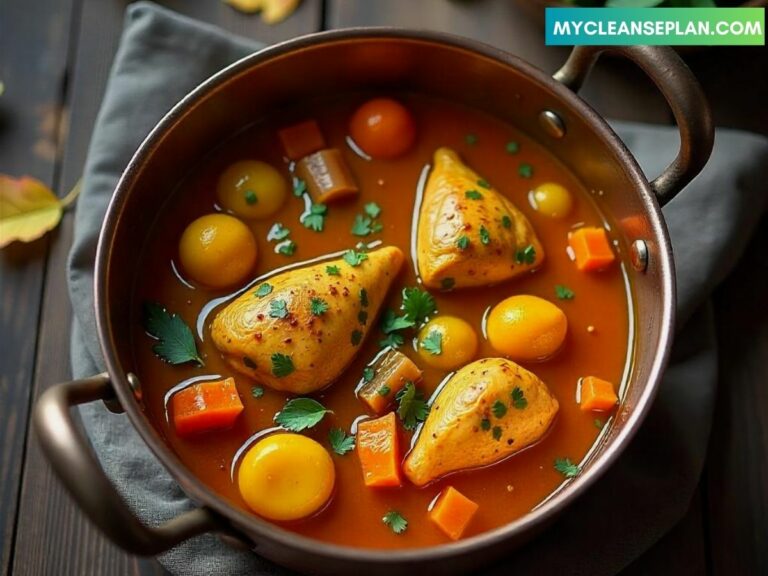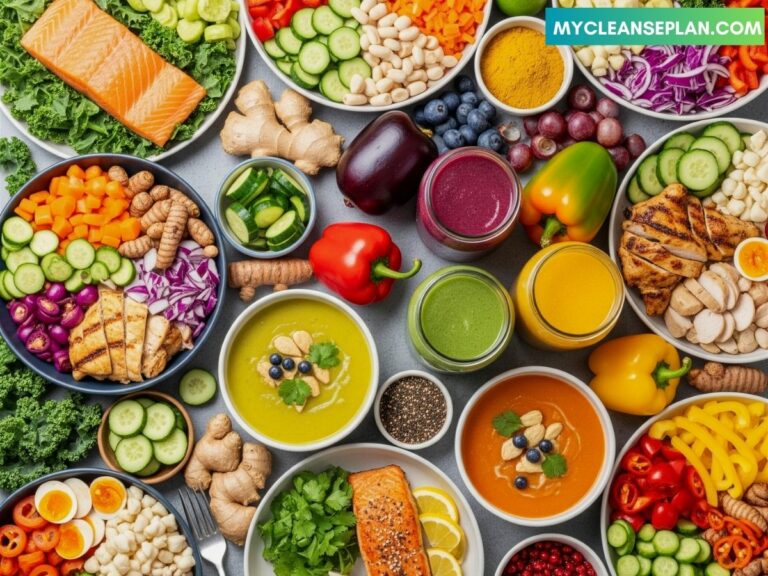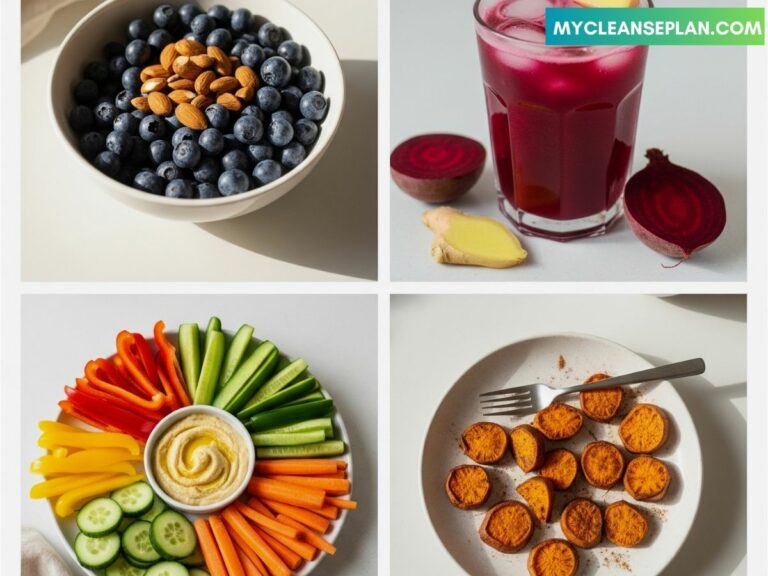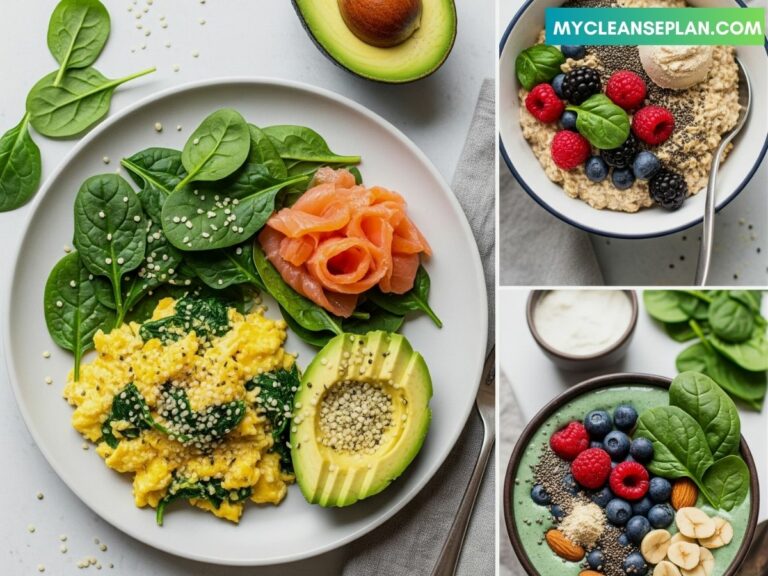Grocery List for Anti-Inflammatory Eating
Chronic inflammation is linked to various health issues, and adopting an anti-inflammatory diet can significantly improve overall well-being. Did you know that certain foods can either fuel or fight inflammation in the body?
By incorporating the right foods into your diet, you can take a proactive step towards better health.
Making informed food choices starts with a well-planned healthy shopping list. By focusing on whole, nutrient-dense foods, you can create meals that support your health goals.
In this article, we’ll explore how to build a grocery list that supports an anti-inflammatory lifestyle.
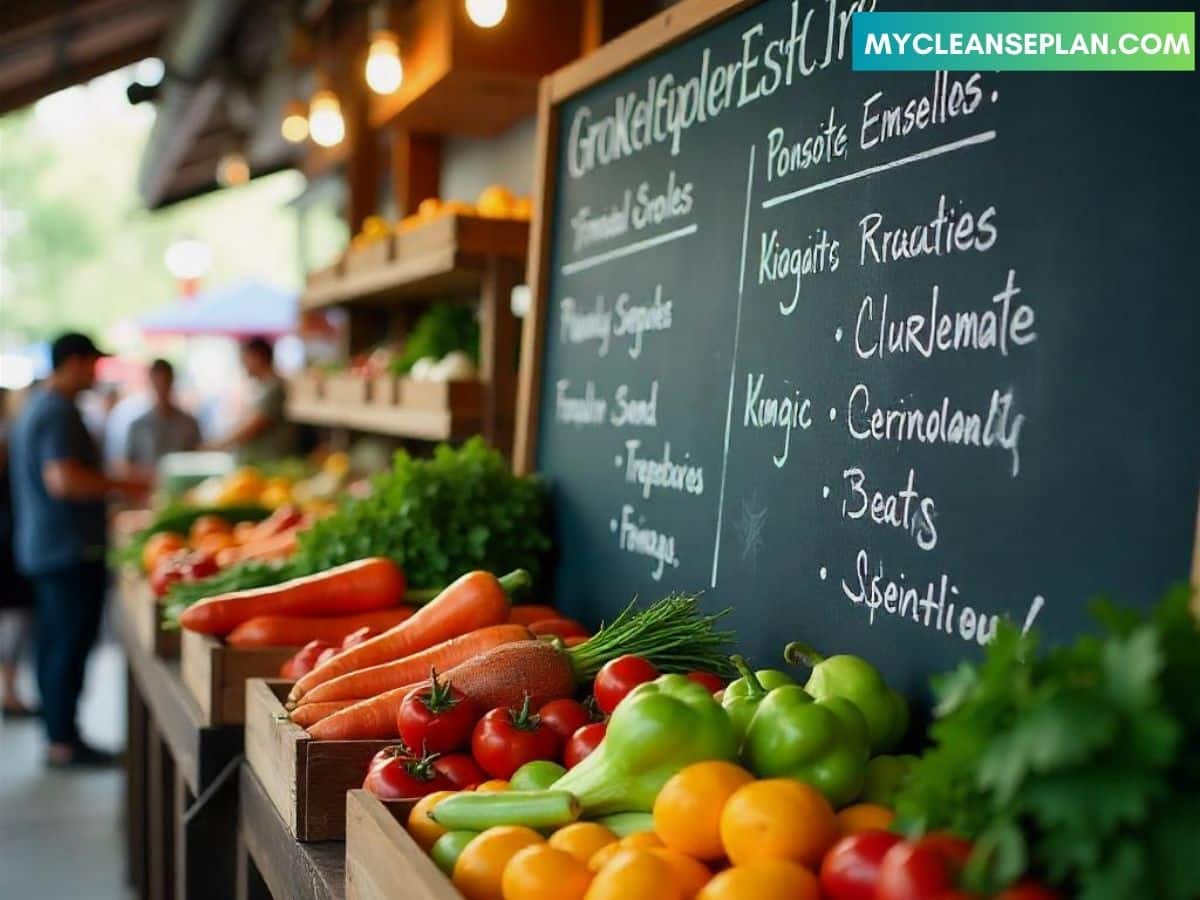
Key Takeaways
Understanding Inflammation and Its Impact on Health
Understanding inflammation is crucial for maintaining a healthy lifestyle and preventing chronic diseases.
Inflammation is the body’s natural response to injury or infection, but when it becomes chronic, it can lead to various health issues.
Acute vs. Chronic Inflammation
Inflammation can be categorized into two main types: acute and chronic. Acute inflammation is a short-term response that helps the body heal from injury or fight off infections.
On the other hand, chronic inflammation persists over time and can lead to conditions such as arthritis, diabetes, and heart disease.

Signs Your Body Is Fighting Inflammation
There are several signs that may indicate your body is fighting inflammation, including persistent fatigue, joint pain, and skin issues. Recognizing these signs early can help you take proactive steps towards reducing inflammation.
How Diet Influences Inflammation
Diet plays a significant role in influencing inflammation. Consuming foods high in sugar, saturated fats, and refined carbohydrates can trigger or exacerbate inflammation.
Conversely, an inflammation-fighting diet rich in fruits, vegetables, whole grains, and lean proteins can help mitigate inflammation.
The Connection Between Food Choices and Inflammatory Response
The foods we choose to eat have a direct impact on our inflammatory response. For instance, foods rich in omega-3 fatty acids, such as salmon, can help reduce inflammation, while processed meats can trigger it.
Understanding this connection is key to making informed dietary choices that support our overall health.

By making conscious food choices and adopting an anti-inflammatory meal planning approach, we can significantly reduce our risk of chronic diseases and improve our quality of life.
https://gigasecurehome.com/troubleshooting-ring-setup-on-android-devices
The Science Behind Anti-Inflammatory Foods
Understanding the science behind anti-inflammatory foods is crucial for making informed dietary choices.
Anti-inflammatory foods are rich in specific nutrients that help combat inflammation in the body.
Key Nutrients That Fight Inflammation
Certain nutrients have been identified as having potent anti-inflammatory effects. These include:
- Antioxidants: Help neutralize free radicals that can cause oxidative stress and inflammation.
- Omega-3 fatty acids: Play a crucial role in reducing inflammation by promoting the production of anti-inflammatory cytokines.
- Polyphenols: Found in high amounts in fruits, vegetables, and certain spices, these compounds have been shown to have anti-inflammatory properties.
Antioxidants, Omega-3s, and Polyphenols
These nutrients work synergistically to provide comprehensive protection against inflammation. For example, a diet rich in antioxidants can help mitigate oxidative stress, while omega-3s support the body’s natural anti-inflammatory processes.
How These Nutrients Work in Your Body
The mechanism by which these nutrients exert their anti-inflammatory effects involves multiple pathways. One key process is the protection and repair of cells.
Cellular Protection and Repair Mechanisms
When cells are damaged, they can become a source of inflammation. Nutrients like antioxidants help protect cells from damage, while omega-3s and polyphenols support the repair of damaged cells, thereby reducing inflammation.
As noted by a recent study, “a diet rich in fruits, vegetables, and healthy fats can significantly reduce markers of inflammation.”
“A diet rich in fruits, vegetables, and healthy fats can significantly reduce markers of inflammation.”

My Complete Grocery List for Anti-Inflammatory Eating
Creating a comprehensive grocery list is a crucial step in adopting an anti-inflammatory diet. Over time, I’ve developed a system that works for me, and I’m excited to share it with you.
How I Organize My Shopping
To keep my shopping organized, I categorize my list into sections. This not only makes shopping more efficient but also ensures that I don’t forget essential items.
- Fruits and Vegetables
- Proteins
- Nuts, Seeds, and Healthy Fats
- Whole Grains
- Herbs and Spices
https://gigasecurehome.com/ring-doorbell-2-not-connecting-to-wifi
My Printable Shopping Template
To make it easier for you to start, I’ve created a printable shopping template that you can use. This template is organized by categories and includes some of my favorite anti-inflammatory foods.

Weekly Shopping Strategy
My weekly shopping strategy involves planning my meals around seasonal produce. This approach not only ensures that I’m getting the freshest ingredients but also helps reduce waste and save money.
Seasonal Adjustments to My List
To keep my diet interesting and tailored to what’s available, I make seasonal adjustments to my list. For example, during the summer, I focus more on berries and stone fruits, while in the winter, I prioritize root vegetables and citrus fruits.
- Check what’s in season
- Plan meals around seasonal produce
- Adjust your list accordingly
By following this strategy, I’ve been able to maintain a varied and anti-inflammatory diet throughout the year.
Colorful Fruits to Add to Your Cart
To boost your intake of anti-inflammatory foods, start by filling your cart with a rainbow of fruits. A diverse array of colorful fruits not only makes your diet more enjoyable but also ensures you’re getting a wide range of nutrients that help reduce inflammation.
Berries: Nature’s Antioxidant Powerhouses
Berries are among the most potent anti-inflammatory foods. They’re rich in antioxidants, fiber, and vitamins that help combat inflammation.
Blueberries, strawberries, and raspberries are particularly beneficial due to their high content of anthocyanins, powerful antioxidants that give them their distinctive colors.
Selecting and Storing Berries
When selecting berries, choose those that are brightly colored and free from mold. To store them, keep berries in a cool, dry place and wash them just before consumption to preserve their nutritional value.
Citrus Fruits and Tropical Options
Citrus fruits like oranges, lemons, and grapefruits are not only high in vitamin C but also contain flavonoids that have anti-inflammatory properties. Tropical fruits such as pineapples and papayas are rich in enzymes like bromelain, which has been shown to reduce inflammation.
Year-Round Availability Guide
Many citrus and tropical fruits are available year-round, making it easy to incorporate them into your diet. Here’s a quick guide to their availability:
| Fruit | Peak Season | Year-Round Availability |
|---|---|---|
| Oranges | December to May | Yes |
| Pineapples | March to July | Yes |
| Lemons | May to October | Yes |
Seasonal Fruit Selections
While some fruits are available year-round, others are seasonal. Taking advantage of seasonal fruits can help you vary your diet and ensure you’re getting a range of nutrients.
Budget-Friendly Fruit Options
To make your fruit shopping more budget-friendly, consider buying in season and opting for frozen or canned fruits when fresh ones are out of season or too expensive.

Anti-Inflammatory Vegetables to Prioritize
To combat inflammation effectively, it’s essential to prioritize certain vegetables in your grocery list. Vegetables are packed with nutrients, fiber, and antioxidants that help reduce inflammation and promote overall health.
Leafy Greens: The Foundation of Anti-Inflammatory Eating
Leafy greens are among the most potent anti-inflammatory vegetables. They are rich in antioxidants and other nutrients that help combat inflammation.
Kale, Spinach, and Beyond
Kale and spinach are staples in an anti-inflammatory diet. They are rich in vitamins A, C, and K, and minerals like calcium and iron. Other leafy greens like collard greens and Swiss chard are also beneficial.
- Kale: Rich in antioxidants and vitamins
- Spinach: Packed with iron and other minerals
- Collard Greens: High in vitamins and fiber
Cruciferous Vegetables
Cruciferous vegetables contain sulforaphane, which has potent anti-inflammatory properties. These vegetables help activate the body’s natural defenses against inflammation.
Preparation Methods That Preserve Nutrients
To maximize the benefits of cruciferous vegetables, it’s crucial to prepare them correctly. Steaming or lightly sautéing these vegetables helps preserve their nutrients.
- Steaming broccoli to retain its sulforaphane content
- Sautéing cauliflower with garlic for added flavor

Colorful Vegetables for Maximum Benefits
Eating a variety of colorful vegetables ensures you get a broad range of anti-inflammatory compounds. The rainbow approach to vegetable selection is both visually appealing and nutritious.
The Rainbow Approach to Selection
Including vegetables of different colors in your diet provides a wide range of nutrients. From red bell peppers to purple cabbage, each color offers unique benefits.
- Red Bell Peppers: High in vitamin C
- Purple Cabbage: Rich in antioxidants
- Carrots: Good source of vitamin A
Allium Family: Garlic, Onions, and Leeks
The allium family, including garlic, onions, and leeks, contains compounds that have anti-inflammatory properties. These vegetables are not only flavorful but also beneficial for reducing inflammation.
Incorporating These Flavor Boosters Daily
Adding garlic, onions, and leeks to your daily meals can be simple and delicious. Use them in soups, stews, and salads to enhance flavor and nutrition.
Tips for Incorporation:
- Add minced garlic to your morning omelette
- Use onions as a base for soups and stews
- Include leeks in your salads for a mild onion flavor
Healthy Proteins That Reduce Inflammation
To effectively reduce inflammation, it’s essential to focus on consuming proteins that are rich in anti-inflammatory properties.
Proteins play a crucial role in our diet, not only for building and repairing tissues but also for producing enzymes, hormones, and other biomolecules essential for various bodily functions.

Fatty Fish Options
Fatty fish are among the top inflammation-fighting foods. They are rich in omega-3 fatty acids, particularly EPA and DHA, which have potent anti-inflammatory effects. Including fatty fish in your diet can help reduce inflammation and improve overall health.
Wild vs. Farmed Considerations
When choosing fatty fish, it’s crucial to consider whether they are wild-caught or farmed. Wild-caught fish generally have higher omega-3 content and lower levels of contaminants compared to farmed fish.
However, some farmed fish are raised using sustainable practices that can make them a viable option.
Plant-Based Protein Sources
For those following a plant-based diet, there are numerous options rich in anti-inflammatory compounds.
These include legumes, tofu, and tempeh, which are not only high in protein but also rich in fiber and various phytochemicals.
Legumes, Tofu, and Tempeh
Legumes, such as lentils and chickpeas, are excellent sources of protein and fiber. Tofu and tempeh, derived from soybeans, offer versatile protein options that can be easily incorporated into meals. These foods are beneficial for reducing inflammation and supporting overall health.
Selecting Quality Animal Proteins
The quality of animal proteins can significantly impact their anti-inflammatory effects. Choosing grass-fed, pasture-raised, and organic options can enhance the nutritional profile of your diet.
Grass-Fed, Pasture-Raised, and Organic Options
Grass-fed beef and pasture-raised poultry and eggs contain higher levels of omega-3 fatty acids and conjugated linoleic acid (CLA), which have anti-inflammatory properties. Organic options reduce exposure to pesticides and antibiotics, further supporting an anti-inflammatory diet.
Nuts, Seeds, and Healthy Fats
To boost your anti-inflammatory eating, it’s essential to include a variety of nuts, seeds, and healthy fats in your grocery list. These foods are not only delicious but also packed with nutrients that help combat inflammation.
Best Nuts for Fighting Inflammation
Nuts are a great snack and a fantastic addition to salads and meals. Some of the best nuts for fighting inflammation include walnuts, almonds, and pecans. Walnuts, for instance, are rich in omega-3 fatty acids and antioxidants.

To keep nuts fresh, store them in a cool, dry place or refrigerate them. This helps preserve their nutritional value and flavor.
Seeds to Include in Your Diet
Seeds are another powerful anti-inflammatory food. Chia seeds, flaxseeds, and hemp seeds are particularly beneficial due to their high omega-3 content and fiber.
Flax, Chia, and Hemp: The Omega-3 Powerhouses
These seeds are not only rich in omega-3s but also provide a good amount of protein. Incorporating them into your diet can be as simple as adding them to your breakfast oatmeal or yogurt.
Oils and Other Healthy Fat Sources
Olive oil, avocado oil, and fatty fish oil are excellent sources of healthy fats. They are versatile and can be used in various cooking applications.
Cooking Applications and Smoke Points
When cooking with oils, it’s crucial to consider their smoke points. For high-heat cooking, avocado oil is a good choice due to its high smoke point, while olive oil is better suited for low-heat cooking or as a finishing oil.
By incorporating these nuts, seeds, and healthy fats into your diet, you’ll be taking a significant step towards reducing inflammation and enhancing your overall health.
Herbs, Spices, and Anti-Inflammatory Seasonings
Herbs, spices, and anti-inflammatory seasonings are not just flavor enhancers; they are powerful tools in the fight against inflammation.
By incorporating the right ingredients into your meals, you can significantly enhance their anti-inflammatory properties.
Turmeric, Ginger, and Other Powerful Spices
Turmeric and ginger are two of the most well-known anti-inflammatory spices. Turmeric contains curcumin, a compound with potent anti-inflammatory and antioxidant properties. Ginger, on the other hand, has been shown to reduce inflammation and pain in the body.
Fresh vs. Dried Options
Both fresh and dried herbs and spices can be used to add anti-inflammatory benefits to your meals.
While fresh options provide a more vibrant flavor, dried spices often have a more concentrated effect due to their higher curcumin content.

Fresh Herbs to Keep on Hand
Fresh herbs like basil, rosemary, and thyme are not only delicious but also packed with antioxidants and anti-inflammatory compounds.
Keeping a variety of fresh herbs on hand can elevate your cooking and provide numerous health benefits.
Growing Your Own Anti-Inflammatory Herb Garden
Growing your own herb garden can be a rewarding experience, providing you with a constant supply of fresh, anti-inflammatory herbs. Consider planting herbs like turmeric, ginger, and mint for maximum benefits.
Anti-Inflammatory Teas and Beverages
In addition to spices and herbs, certain teas and beverages can also help reduce inflammation. Green tea, for example, is rich in antioxidants and has been shown to have anti-inflammatory effects.
My Daily Drink Rotation
I like to incorporate a variety of anti-inflammatory teas and beverages into my daily routine. Some of my favorites include turmeric tea, ginger ale, and green tea. These drinks not only taste great but also provide a boost to my overall health.
| Herb/Spice | Anti-Inflammatory Benefits | Usage |
|---|---|---|
| Turmeric | Contains curcumin, which reduces inflammation | Add to curries, soups, and teas |
| Ginger | Reduces inflammation and pain | Use in stir-fries, teas, and baked goods |
| Green Tea | Rich in antioxidants, anti-inflammatory effects | Drink hot or iced, sweetened or unsweetened |
Meal Planning and Prep with Anti-Inflammatory Foods
Anti-inflammatory meal planning is not just about food; it’s about adopting a healthier lifestyle. By incorporating the right foods into your diet, you can significantly reduce inflammation and improve your overall wellbeing.
Simple Weekday Meal Templates
Creating simple meal templates can make your weekly meal planning much easier. For instance, you can plan your meals around a central protein source, such as grilled chicken or salmon, and pair it with a variety of anti-inflammatory vegetables and whole grains.
Here is a sample meal template:
| Day | Breakfast | Lunch | Dinner |
|---|---|---|---|
| Monday | Oatmeal with berries | Grilled chicken salad | Baked salmon with quinoa |
| Tuesday | Greek yogurt with honey | Turkey and avocado wrap | Stir-fry with turmeric chicken |
Batch Cooking Strategies
Batch cooking is a great way to save time during the week. By cooking large batches of a single ingredient, such as rice or lentils, you can use it in multiple meals throughout the week.
For example, cooking a large batch of lentils on Sunday can provide you with a quick and easy protein source for salads, soups, and curries throughout the week.
Budget-Friendly Anti-Inflammatory Eating
Eating anti-inflammatory foods doesn’t have to break the bank. By planning your meals around seasonal produce and buying in bulk, you can save money while still enjoying a variety of healthy foods.
Seasonal Shopping and Bulk Buying
Shopping for seasonal produce can help reduce costs and ensure that you’re getting the freshest ingredients. Additionally, buying items like nuts, seeds, and grains in bulk can save you money in the long run.
Here are some tips for bulk buying:
- Purchase from reputable sources
- Store items properly to maintain freshness
- Use items before they expire
Time-Saving Kitchen Tools
Having the right kitchen tools can make meal prep much faster and more efficient. Some essential tools include a slow cooker, instant pot, and a good set of knives.
My Essential Equipment List
Some of my favorite kitchen tools include:
- A slow cooker for easy meal prep
- An instant pot for quick cooking
- A spiralizer for creative vegetable dishes

FAQ Of Grocery List for Anti-Inflammatory Eating
What is an anti-inflammatory diet, and how does it help?
An anti-inflammatory diet focuses on consuming foods that help reduce or manage inflammation in the body. By incorporating anti-inflammatory foods into your diet, you can potentially alleviate symptoms of chronic inflammation, improve overall health, and reduce the risk of various diseases.
How do I start creating an anti-inflammatory grocery list?
To start creating an anti-inflammatory grocery list, begin by identifying key food groups that are known to fight inflammation, such as colorful fruits, leafy greens, fatty fish, and healthy fats. You can then plan your meals around these foods and make a list of the ingredients you need to buy.
What are some examples of anti-inflammatory foods I should include in my diet?
Examples of anti-inflammatory foods include berries, citrus fruits, leafy greens like kale and spinach, fatty fish like salmon, nuts and seeds like walnuts and chia seeds, and healthy fats like olive oil. You can also include anti-inflammatory spices and herbs like turmeric, ginger, and garlic in your cooking.
How often should I shop for anti-inflammatory groceries?
The frequency of shopping for anti-inflammatory groceries depends on your personal needs and preferences. You may want to shop weekly or bi-weekly, depending on how quickly you go through fresh produce and other ingredients.
Can I still eat my favorite foods on an anti-inflammatory diet?
While an anti-inflammatory diet encourages the consumption of whole, nutrient-dense foods, it’s not necessary to completely eliminate your favorite foods. You can still enjoy your favorite treats in moderation, but try to balance them out with anti-inflammatory options.
How can I make meal planning easier with anti-inflammatory foods?
To make meal planning easier with anti-inflammatory foods, try creating simple meal templates, batch cooking, and planning your meals around seasonal produce. You can also prep ingredients in advance to save time during the week.
Are there any specific kitchen tools that can help with anti-inflammatory meal prep?
Yes, having the right kitchen tools can make meal prep easier and more efficient. Some essential tools include a slow cooker, instant pot, sharp knives, and a cutting board. These tools can help you prepare and cook anti-inflammatory meals with ease.
Can I grow my own anti-inflammatory herbs and vegetables?
Yes, growing your own anti-inflammatory herbs and vegetables can be a great way to ensure a steady supply of fresh produce. Consider starting with easy-to-grow options like basil, cilantro, and leafy greens, and expand to other varieties as you gain experience.
Conclusion: Building Your Anti-Inflammatory Lifestyle
As we conclude our journey through the world of anti-inflammatory eating, it’s clear that adopting a Grocery List for Anti-Inflammatory Eating is just the first step.
Incorporating anti-inflammatory foods into your daily meals can have a significant impact on your overall health and well-being.
To build a sustainable anti-inflammatory lifestyle, focus on consistency and patience. Start by implementing small changes to your diet and gradually work your way up to more significant adjustments.
As you continue on this path, you’ll begin to notice the benefits of anti-inflammatory foods and be motivated to make long-term changes.
By combining a balanced diet rich in anti-inflammatory foods with a healthy lifestyle, you’ll be well on your way to reducing inflammation and improving your overall quality of life. Take the first step today and start building your anti-inflammatory lifestyle.


